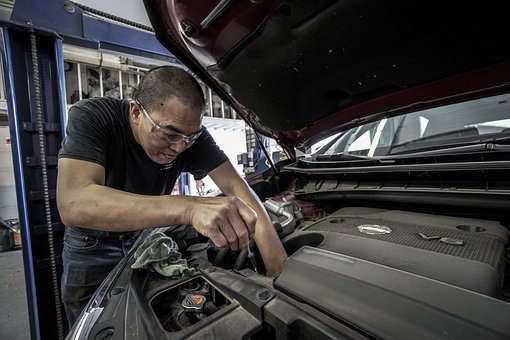What Are The Basic DIY Car Repairs You Should Know
Despite cars being around for many years, the basic mechanics haven’t changed a whole lot, yet most people’s understanding of cars does not stretch beyond where to put the fuel. But there are plenty of basic DIY repairs that anybody can master. We can’t always guarantee help will be at hand if we get into trouble when driving, so it makes sense to get to know your car a little better. Not only will it make you more confident when it comes to problem-solving car issues, but it’ll save you money too.
Changing a Flat Tyre
Tyres are one of the most important parts of your vehicle and no matter how expensive your car is, if your tyre’s flat, you aren’t going anywhere. But changing a flat tire isn’t as hard as you might think and it’s a skill that may well come in handy one day. Cars with a spare wheel will have all the tools you require on board and ready for use. Follow the instructions in the manual and make sure the wheel is fitted correctly before setting off. It’s a good idea to practice at home rather than experience it first time on the side of a road with busy traffic speeding by. And be sure to get the tyre checked by a professional afterwards to ensure it’s fitted correctly. Choosing high-quality tyres from brands such as Dick-Cepek or General is guaranteed to ensure you’re having to do this repair less often.
Changing the Oil
It’s important to regularly check your oil level, and if necessary, change the oil to ensure the car runs efficiently and to protect the engine. The basic task is simple enough but will vary in difficulty depending on the car you have. Check the owner’s manual to learn more and to find out where the oil filter and drain plug for your car are. If you get stuck, then there are plenty of tutorials and video walk-throughs online.
Changing Spark Plugs
Spark plugs reside inside the engine cylinder and are responsible for creating the sparks that ignite the fuel and start the engine. As with all things, spark plugs have a lifespan and will need replacing at some point so it’s a good idea to know how to do it. The cost of a professional doing the work can be expensive, but the parts themselves are relatively cheap. Consult your user manual if you’re unsure or check out tutorials online for more information.
Windscreen Wiper Blades
Wiper blades need replacing regularly and it’s important that they are, or you will struggle with visibility when driving. Luckily, it’s an incredibly easy and cheap fix and requires no tools. Blades can be bought cheaply online and come with instructions that explain exactly how to fit them. Make sure they are fitted correctly before use, or they may scratch the windscreen.
Replacing a Car Battery
It’s not often that the car battery needs changing but when it does, you can be sure it will be when you need your car the most. There is any number of reasons for batteries to fail, from the unit’s age to accidentally leaving the headlights on. Replacing your battery at home will save you a lot of money and it’s easier than you might think. Find the right battery for your car online or at your local garage and follow the instructions in your car manual or a tutorial online. Remove the covers around the battery, disconnect the cables, remove the screws and lift the battery out. Then replace it with the new one but make sure the negative cable is the last one to be connected or you may short circuit the positive terminal.
Ask a Professional
While it’s great to know the basics when it comes to DIY car maintenance, it’s also important to know when to ask a professional to do the job. Mechanics will work quicker and more efficiently, plus they have all the tools and diagnostic equipment to hand. If you do not know what you are doing when it comes to repairs, you could potentially damage the car or cause an accident through incorrect maintenance. Certain repairs that are not carried out by qualified mechanics, may also void the warranty and cost more to repair in the long run.


